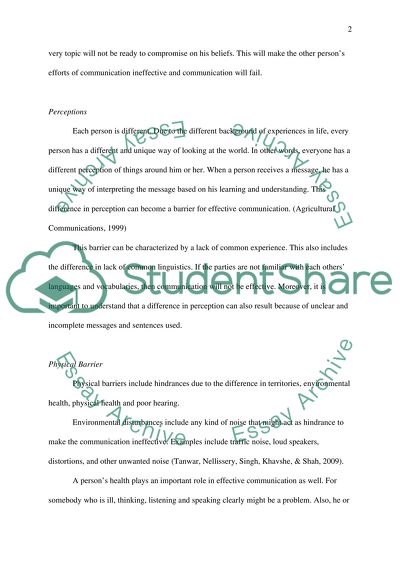Cite this document
(Barriers to Effective Interpersonal Communication Essay Example | Topics and Well Written Essays - 1500 words, n.d.)
Barriers to Effective Interpersonal Communication Essay Example | Topics and Well Written Essays - 1500 words. https://studentshare.org/psychology/1561858-what-are-the-main-barriers-to-effective-interpersonal-communication-and-how-might-they-be-overcome
Barriers to Effective Interpersonal Communication Essay Example | Topics and Well Written Essays - 1500 words. https://studentshare.org/psychology/1561858-what-are-the-main-barriers-to-effective-interpersonal-communication-and-how-might-they-be-overcome
(Barriers to Effective Interpersonal Communication Essay Example | Topics and Well Written Essays - 1500 Words)
Barriers to Effective Interpersonal Communication Essay Example | Topics and Well Written Essays - 1500 Words. https://studentshare.org/psychology/1561858-what-are-the-main-barriers-to-effective-interpersonal-communication-and-how-might-they-be-overcome.
Barriers to Effective Interpersonal Communication Essay Example | Topics and Well Written Essays - 1500 Words. https://studentshare.org/psychology/1561858-what-are-the-main-barriers-to-effective-interpersonal-communication-and-how-might-they-be-overcome.
“Barriers to Effective Interpersonal Communication Essay Example | Topics and Well Written Essays - 1500 Words”. https://studentshare.org/psychology/1561858-what-are-the-main-barriers-to-effective-interpersonal-communication-and-how-might-they-be-overcome.


